Here is some more technical information about what’s going on when we have back pain and some options to help, but as always nothing should hurt when you do it!
If we can ensure that we are regularly (daily) moving the spine is all its natural, healthy ways AND that we have core muscles (deep core, not a 6-pack) that are strong enough to do their job of supporting the torso AND we ensure that these muscles are long enough to do that job, we are well on our way to a much happier back!
Or do the Yoga for Back Pain classes.
The back can be split into three regions, upper back, middle back, and lower back.
- Upper back is the cervical spine, around the neck and upper shoulder area.
- Middle back is the thoracic, around the shoulder blades and down to the low ribs.
- Lower back is lumbar, below the ribs and around the tops of the hips.
UPPER BACK
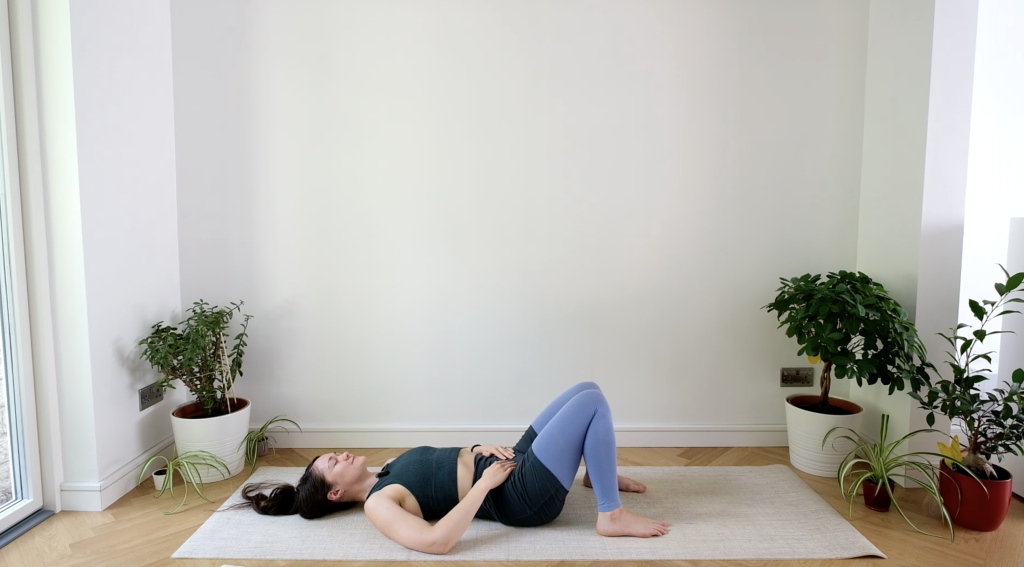
The Problem
The muscles in the upper back become fatigued when the head is not in alignment with the spine, we want to stack our weight in the bones, in this case the weight of the head into the spine. This misalignment is fine for short periods of time, for instance when we are fixing something or making something, checking the soup etc. This becomes a problem when we try to hold this ‘tech neck’ for hours, from texting and typing, or never take any time to ‘undo’ it.
The Fix
Counter this problem with a constructive rest pose (pictured). Lie on your back with your knees bent. Allow your head to fall back into alignment with the rest of the spine. Be aware of the spines natural curves. Allow the arms to relax into a comfortable position or out to the side in a T shape to add a little more stretch. Hold for a few breaths. It might feel like you’re upside-down, that is very unlikely. Take a picture of yourself to know for certain. Does it look like good posture or lifted chest? Keep doing it until it feels natural.
MIDDLE BACK
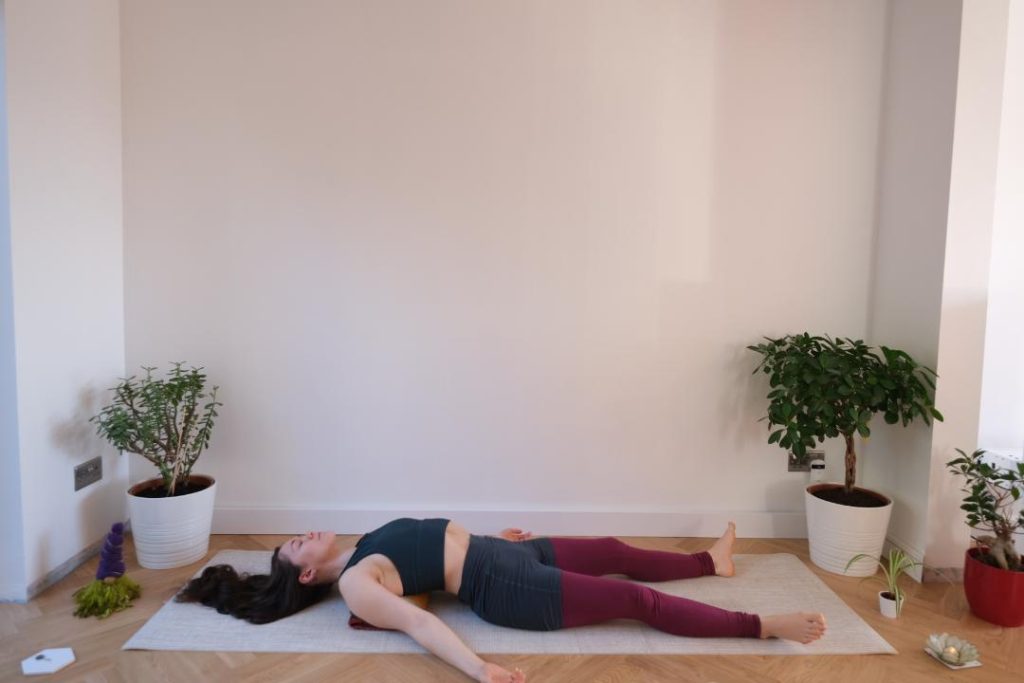
The Problem
The muscles in the middle back and chest work to stabilise the organs, spine and help us breath. When we round forward and down we make breathing difficult this causes the body to naturally fall in to shallower and shallower breathing pattern. This can cause sleepiness, brain fog and just generally not feeling very awake or alert.
The Fix
Counter this problem with poses like supported fish pose (pictured). Be mindful of the cervical artery and never throw the head all the way back when opening the throat and chest! Be gentle. Hold for a few breaths or until it feels natural.
LOW BACK
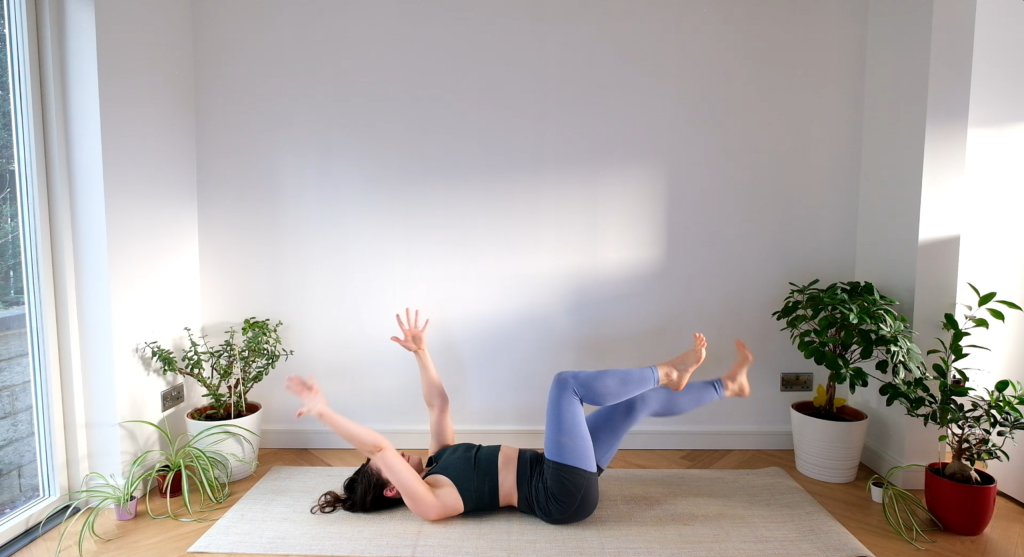
The Problem
The muscles in the lower back and belly work to stabilise the whole upper body and spine. They help with walking and are directly connected to the legs through the hips. The abdominals have the job of holding everything where it needs to be and helping the back muscles do their job.
The Fix
Counter this problem with core conditioning, strengthen movements (not sit ups!). Lie on your back with the knees bent in line with the hips, one foot or both feet off the floor and arms up to the ceiling. Hold this position not allowing the lower back to arch or round, not allowing the hips to tilt, for a few breaths. This is a slightly complicated pose and has optional movement, but we covered it in the Yoga for Back Pain class where there are options if this variation is too hard, you can also leave the arms out of it!
THE SPINAL SUPPORT
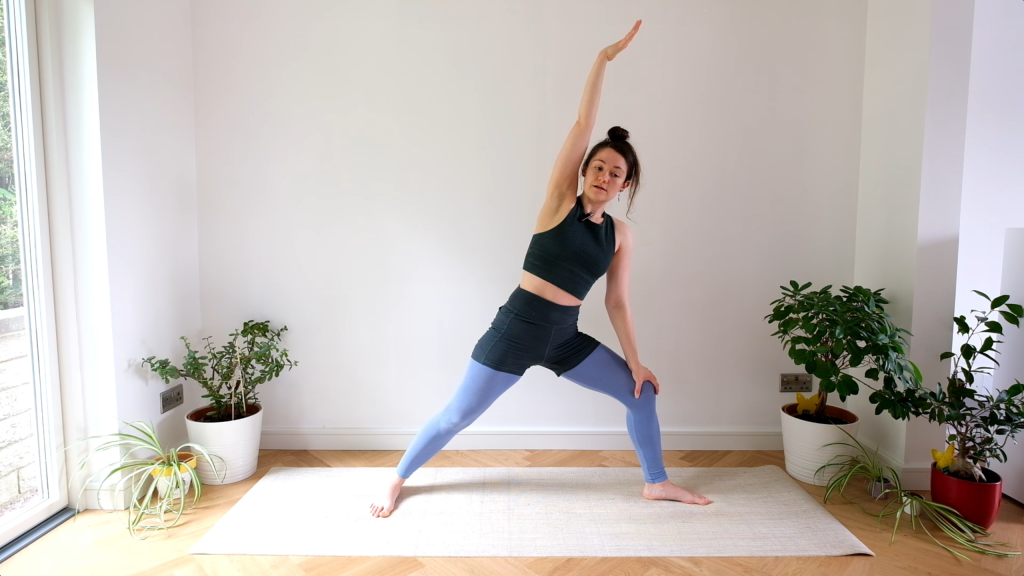
The Problem
The quadratus lumborum muscle at the side of the spine but deep in can also be a common source of pain. This muscle is large stabilising muscle and connects the spine to hips. When it is tight it can compress the spine (yikes!) and cause pain anywhere from the middle back to the butt.
The Fix
Counter this problem with stretches and strengthening poses. Stretches: most side bends. Extended Side Angle (pictured) is a great way to strengthen and stretch. Stand with your feet wide, turn your left toes out, put one hand above the knee on the thigh, put one hand above the head, reaching up and over. Hold for a few breaths. Be sure to do the other side!
We do side angle in the Yoga for Back Pain class and a standing side stretch and reach. I’ve also included a strengthening post in the class: gentle locus with optional movements such as our superman / superwoman.
THE FRONT OF THE HIPS
THE ILIOPSOAS
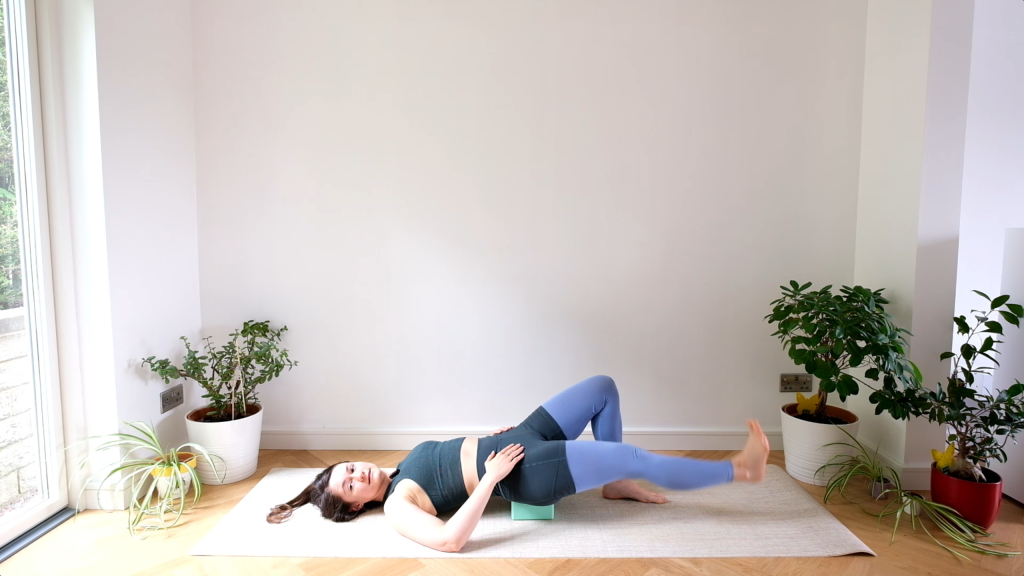
The Problem
The iliopsoas muscle group connects the spine to the thigh-bone. This area, the hip flexors, can shorten and weaken when we sit to too long.
The Fix
Counter this problem with strengthening pontoon pose (be mindful of the neck in pontoon) with optional ‘bounces’ to strengthen the muscle (we do this in the Yoga for Back Pain classes).
HOW THIS HELPED OTHERS
Comments from people who I have worked with around back pain:
- “After just one class my back feels loads better. I didn’t have any pain for days after.”
- “I’ve started sitting better and more mindful at work, which makes me feel more alert and awake.”
- “After a few classes, I’m a lot less tired and things generally feel loads better all the time.”
- “Thank you so much! That nerve I had pinched in my back has completely released!”
Want the Yoga for Back Pain classes?
Please do get in touch if you would like to do my 5-part Yoga for Back Pain series on-demand classes. I’m also available for 1:1 Yoga Classes to help support your healing journey!